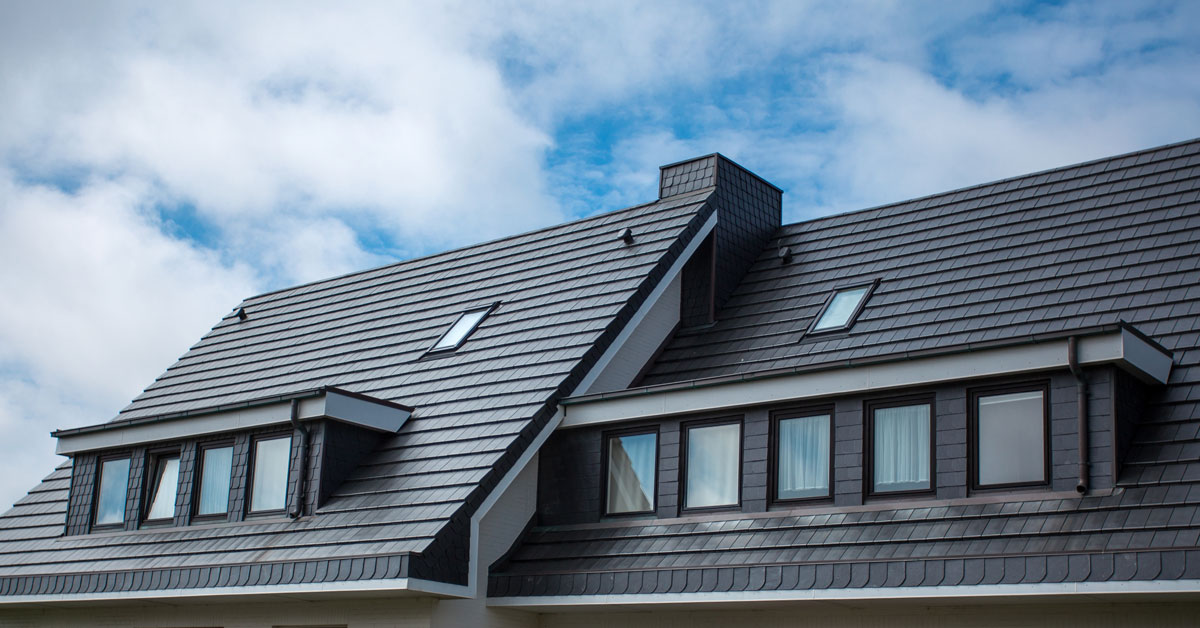A Comprehensive Look at Roofing Companies Gainesville Residents Recommend
A Comprehensive Look at Roofing Companies Gainesville Residents Recommend
Blog Article
Finest Practices for Ensuring Correct Roof Covering Air Flow
Ensuring proper roof air flow is vital for the longevity and effectiveness of a roofing system. A balanced intake and exhaust air vent ratio, typically 1:300, plays a crucial function, with intake vents preferably put at the lower side of the roof for awesome air access and exhaust vents at the optimal for warm air exit. Normal examinations to identify clogs and keep clear air movement are critical. Furthermore, maintaining insulation far from vents is important to stop airflow limitation. Understanding these foundational components sets the phase for more thorough insights into setup and upkeep techniques that can substantially boost your roofing system's performance.
Understand Air Flow Basics
Properly recognizing air flow fundamentals is essential for making certain the long life and effectiveness of roof. Reliable air flow alleviates moisture build-up and temperature extremes in the attic room, both of which can bring about substantial structural damages with time. A well-ventilated roof covering aids in stopping typical problems such as mold growth, wood rot, and ice dams, which can compromise the integrity of the roofing products and the underlying structures.
The key objective of air flow is to assist in the movement of air, permitting for a consistent exchange between the indoor and exterior environments. This equilibrium is accomplished via a combination of consumption and exhaust vents that function together to maintain ideal air movement. Intake vents, normally located along the soffits or eaves, permit fresh air to go into the attic space, while exhaust vents, commonly located at or near the roofing system ridge, allow warm, damp air to escape.
Trick factors affecting the effectiveness of roofing air flow consist of proper positioning, ample sizing, and ensuring that both consumption and exhaust vents are unblocked. Routine inspection and maintenance are important to identify possible clogs, damages, or inadequacies in the air flow system, consequently protecting the roof's efficiency and sturdiness.
Kinds Of Roof Vents
Roof covering vents play a crucial function in maintaining reliable attic air flow and, by extension, the overall wellness of the roof. Numerous sorts of roof vents are offered, each with one-of-a-kind advantages tailored to details roof covering needs. Ridge vents, for instance, are installed along the roof covering's optimal, permitting cozy, damp air to get away from the attic. They use continual air flow and mix effortlessly with the roofline, making them both effective and visually pleasing.

Soffit vents are mounted under the eaves and operate in tandem with roofing vents to make sure a well balanced consumption and exhaust system. By enabling cooler air to enter from below, soffit vents facilitate the expulsion of warm air with upper vents. Gable vents, located on the exterior walls of the attic room, offer another efficient service, especially in homes with gable roof coverings.
Assess Your Existing Air Flow

Following, consider the my review here age and problem of your roofing materials and ventilation parts. Older systems might not adhere to current building codes or might have weakened with time, decreasing their efficiency. Conduct an extensive evaluation to identify any kind of indicators of deterioration, such as corrosion, damage, or gaps that might endanger the system's performance.
Additionally, gauge the attic temperature and moisture degrees. High temperatures and moisture can suggest inadequate ventilation - roofing companies in gainesville florida. Make use of a hygrometer and thermostat to obtain exact analyses, comparing them with exterior problems. Consistent disparities suggest prospective issues that require attending to.
Installation Best Practices
Effective setup of roof air flow systems is extremely important for making certain optimum efficiency and long life. Appropriate installation begins with comprehending the particular air flow demands of the roof covering and the building it covers. This entails determining the correct ratio of consumption to exhaust vents, generally sticking to the 1:300 regulation, which specifies one square foot of air flow for each 300 square feet of attic floor area.

Intake vents ought to be installed at the roof's reduced side, frequently in the soffits, to allow great air to get in. Exhaust vents, on the other hand, ought to be installed near or at the roofing's top to assist in the leave of warm, wet air.
Seal all vent connections thoroughly to stop air leakages and potential water seepage. Usage top quality products and adhere to supplier guidelines to make sure longevity and performance. Additionally, integrating ridge vents with baffles can considerably enhance airflow performance by stopping wind-driven rainfall and snow from getting in the attic room.
Eventually, specific setup of roof air flow systems mitigates possible concerns such as mold development, ice dams, and structural damage, ensuring the roof's stability and the structure's general health.
Routine Maintenance Tips
Consistency in upkeep methods is basic to guaranteeing the lasting performance of roofing ventilation systems. Throughout these inspections, guarantee that vents are totally free of particles, nests, and various other obstructions that might impede airflow.
Use a soft brush or a vacuum to eliminate dust and particles from consumption and exhaust vents. Be mindful not to damage the air vent screens or louvers during the procedure.
Appropriate insulation is equally important. Guarantee that attic insulation does not obstruct the vents, as important site this can severely limit air flow. If any insulation has actually moved or resolved, reposition or replace it to preserve a reliable barrier.
Finally, change any harmed or missing elements quickly. Busted vents, broken roof shingles, or shabby flashing can all add to inadequate air flow and needs to be dealt with right away. Routine upkeep ensures that the roofing ventilation system operates ideally, consequently expanding the life-span of the roofing system itself.
Final Thought
Making certain proper roof covering ventilation is extremely important for maintaining the efficiency and toughness of a roof covering system. Adherence to the 1:300 intake and exhaust vent proportion, combined with the critical placement of vents, is vital.
A balanced intake and exhaust vent ratio, frequently 1:300, plays a critical duty, with intake vents preferably positioned at the reduced edge of the roofing for cool air access and exhaust vents at the optimal for cozy air leave. Intake vents, commonly situated along the soffits or eaves, allow fresh air to get in the attic room, while exhaust vents, Go Here commonly situated at or near the roof covering ridge, enable hot, moist air to run away.
Soffit vents are set up under the eaves and job in tandem with roofing system vents to guarantee a well balanced intake and exhaust system. By enabling cooler air to get in from below, soffit vents facilitate the expulsion of hot air via top vents. Adherence to the 1:300 consumption and exhaust air vent proportion, combined with the strategic placement of vents, is essential.
Report this page